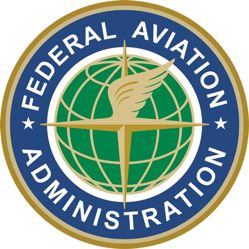The Travel Detective
Air Traffic Control Staffing Concerns And Frequent-Flier Face-Lifts?
 From sleepy air traffic controllers to the neverending saga of frequent-flier mile redemption, the world of travel news keeps on spinning.
From sleepy air traffic controllers to the neverending saga of frequent-flier mile redemption, the world of travel news keeps on spinning.
Peter sat down with The Wall Street Journal’s Scott McCartney to hash out the latest in travel news.
Peter Greenberg: Let’s start with the guy being asleep at the control tower at Reagan.
Scott McCartney: It’s a little bit scary. I think more scary for people who aren’t pilots who don’t necessarily know how things work. But you know this kind of stuff just shouldn’t happen and fatigue in control towers has been an issue before. The thing that troubles me about it is this was looked at very closely after the Lexington, Kentucky, Comair crash where a controller who had been on duty a long time was working as a single controller and wasn’t paying attention to the aircraft. The aircraft took off on the wrong runway, didn’t have enough room and crashed. Here you have a controller dozing off. After the Lexington crash that the FAA said, “We’re going to have a big look at this issue; we have to do something about it.” Yet here at the nation’s capital, we find there’s a single controller working four straight over night shifts and he dozed off at what could have been a critical moment.
Learn more about the most recent incident: Washington’s Reagan National Airport Air Traffic Controller Allegedly Falls Asleep, Putting Planes At Risk
 PG: It’s interesting because Randy Babbitt, the administer of the FAA, announces a sweeping view of staffing policies. Well hello, news bulletin, you’re understaffed to begin with. This goes back to 1981 when Reagan fired the original air traffic controllers and they hired all their replacements. Well, 25 years later, by 2006, those guys were retiring and the FAA had moved at glacier-like speed to ramp up their hiring to replace them. As anybody who knows air traffic control knows, you cannot go to a school of air traffic control, fill out the back of a match book and become an air traffic controller. It’s going to take you at least three years working with a supervisor before they’ll ever let you sit at the control board by yourself.
PG: It’s interesting because Randy Babbitt, the administer of the FAA, announces a sweeping view of staffing policies. Well hello, news bulletin, you’re understaffed to begin with. This goes back to 1981 when Reagan fired the original air traffic controllers and they hired all their replacements. Well, 25 years later, by 2006, those guys were retiring and the FAA had moved at glacier-like speed to ramp up their hiring to replace them. As anybody who knows air traffic control knows, you cannot go to a school of air traffic control, fill out the back of a match book and become an air traffic controller. It’s going to take you at least three years working with a supervisor before they’ll ever let you sit at the control board by yourself.
I mean, it’s not an easy job; it’s a high-stress job. We’re talking about whether you’re a ground controller, or a tower controller at the airport, or an air traffic control center controller. Either way you don’t need a sweeping review of your staffing policies to realize you’re understaffed.
SM: I think that’s right. There are some schools that are pumping out a lot of controllers. Some make it and some don’t. It is high stress. I was up at the control tower at Kennedy Airport at New York talking to them about something else not too long ago. They have a bunch of trainees up there. And you know the supervisor of the tower said they’re doing a good job, that they’re good controllers. So I think there’s a lot of hope for the next generation, especially kids who have grown up on video games. There’s some similarity for air traffic control.
Learn more: Becoming An Air Traffic Controller: Interview With National Air Traffic Controller Association’s President
 But you know the thing about aviation is you have to have redundancy to have safety. Everything that’s in the airplane there is at least two of—that is critical—often three and four, so you have back ups when something fails. Sometimes the FAA would look at a control tower like Washington Reagan and say, you know from midnight to 5 a.m. you only have 10 flights or so out of that whole period, so one controller can certainly handle it. That’s true, one controller can handle it but you need the redundancy. You need the back up. You need someone to talk to and double check you and make sure that you’re not nodding off.
But you know the thing about aviation is you have to have redundancy to have safety. Everything that’s in the airplane there is at least two of—that is critical—often three and four, so you have back ups when something fails. Sometimes the FAA would look at a control tower like Washington Reagan and say, you know from midnight to 5 a.m. you only have 10 flights or so out of that whole period, so one controller can certainly handle it. That’s true, one controller can handle it but you need the redundancy. You need the back up. You need someone to talk to and double check you and make sure that you’re not nodding off.
PG: The way I look at it, I do it akin to the baseball leagues. In the baseball leagues you have the Minor Leagues and the Major Leagues. In the air traffic control system you only have the Major Leagues. So the farm club doesn’t work. You can’t ask a high-school kid to pitch the bottom of the ninth inning in the World Series and expect them to throw a perfect game; you need that training. I’m glad they told you the rookies were doing okay, but I guarantee you those rookies weren’t sitting at a control board by themselves.
SM: No, of course not. There is some hierarchy. You can start out at airports that aren’t busy. You start out at private aviation airports and sort work your way up. It’s generally you’re not going to be plopped into the O’Hare approach control, the hottest seat in the building, right away. You may spend some time out at DuPage or some other airport.
Could you become an air traffic controller? Find out What It Takes To Become An Air Traffic Controller
PG: Let’s shift gears and go on one of my favorite topics, which is redeeming frequent-flier miles. You’ve talked about this in one of your columns about basically gambling with your frequent-flier miles. I think the airlines have reached the point of critical mass where they realize what’s the point of a loyalty program that doesn’t reward you with loyalty?  And if you’re filling 80 percent of your seats there’s not a big incentive on the part of the airlines to get rid of a frequent-flier mile program and displace revenue passengers. So they’re trying to come up with other ways; anything other than putting you on a plane so you can redeem your miles. Some of it is pretty silly.
And if you’re filling 80 percent of your seats there’s not a big incentive on the part of the airlines to get rid of a frequent-flier mile program and displace revenue passengers. So they’re trying to come up with other ways; anything other than putting you on a plane so you can redeem your miles. Some of it is pretty silly.
SM: Some of it is pretty silly. It piqued my interest because I saw a mention of plastic surgery for frequent-flier miles.
PG: I saw that, yeah it’s a guy named Verne in Encino.
SM: You can get a face-lift from Finnair, although the airline said that they didn’t have a lot of takers for the airline face-lift and so they were probably going to drop it. But you’re right, airlines are really scrambling to find ways to get people to spend their miles on something other than seats. Merchandise is a good thing. For road warriors who have tons and tons of miles, the last thing they want to do is take another trip. Instead, you have the opportunity to buy headphones or a television or a necklace for your wife, or designer sunglasses or, in the case of Hawaiian Airlines, you can get gambling chips at a casino and try to leverage the value of your miles that way.
Previously with Scott McCartney: Frequent-Flier Program Changes & Other Airline News
PG: If you do the math and you realize that about 54 percent of all mileage earned these days is earned on the ground where you get 1 mile per dollars spent. That means just for a regular 25,000 mile reward you probably spent about $14,000 exclusive of what you spent for your airline tickets.
SM: Yes, the value of redemption is not very good. I think this is a problem for the industry. You know if you look at the miles as though they’re gravy and you don’t put a value on the (and that is what the airline is hoping), stop and realize you’re only getting a penny per mile out of that. You can do better than that.
By Peter Greenberg for Peter Greenberg Worldwide Radio.
Related Links on PeterGreenberg.com:
- Washington’s Reagan National Airport Air Traffic Controller Allegedly Falls Asleep, Putting Planes At Risk
- Becoming An Air Traffic Controller: Interview With National Air Traffic Controller Association’s President
- What It Takes To Become An Air Traffic Controller
- DOT Investigates FAA’s Air Traffic Control Cover-Up
- Kid Directs Air Traffic At JFK, Controllers Suspended Pending Investigation
- Frequent-Flier Mileage & Reward Programs section
- Frequent-Flier Program Changes & Other Airline News
- How To Redeem Frequent-Flier Miles: Unusual Ways To Make Miles Work For You












